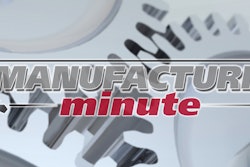Chances are that you’ve read about or have at least heard about the Internet of Things or “IoT” in the last year. In case you’re just now hearing about it, IoT refers to network interconnectivity in which everyday objects, machines and hardware are able to communicate data without the need for human to computer interaction. This is sometimes also referred to as machine to machine or M2M communication.
Until recently, most mainstream media coverage of IoT has been focused on smart homes and wearables. However, the real future in this space, and where analysts believe IoT is expected to have a larger impact, is in the manufacturing, oil and gas and utility sectors — also referred to as the Industrial Internet of Things or IIoT.
Some skeptics believe IoT is just a fad, but if we think back, the Internet itself was also once thought of as a technology fad. Cynics said the World Wide Web wouldn’t amount to much and that businesses that invested in the Internet would fail. Well, we now know how that “fad” turned out, and history may be repeating itself as we see the Internet of Things gaining momentum, all while critics continue looking for its faults and transitory timeline.
According to industry experts, IoT is currently at the peak of the hype cycle, and it’s no surprise that organizations across the globe are now beginning to take notice. With the increased efficiency and cost-saving potential that IoT holds, manufacturers are beginning to explore how they can incorporate IoT into their business models. IoT offers exponential opportunities for improved functionality and capabilities, greater reliability and increased product utilization — all of which transcend traditional product boundaries.
This is sometimes easier said than done, but manufacturers and businesses need to begin considering ways to incorporate IoT in their day-to-day operations. The question that needs to be asked is, “what value will an IoT system integration bring to the manufacturing process?” By brainstorming ways to make systems and processes flexible and more efficient at the same time, companies can ascertain what areas may or may not need a customized IoT solution.
IoT Challenges
Though machine automation has been around for quite some time, it’s apparent that IoT is much more than simple automation. The future of IoT will actually predict and automate the entire decision making process and lead companies to an unprecedented level of efficiency.
However, as we progress to this next phase of Internet connectivity, a few challenges present themselves, specifically as it relates to IoT solution providers and hardware development. These companies have to consider the right sensors, communication ports and connectivity issues tied to power management and energy consumption, while keeping in mind that cloud data security is key to IoT and necessary component to prevent tampering and illegal data access. Additionally, software development must make decisions on which protocols to use to send data securely to the cloud, how to schedule tasks, store messages, manage and monitor the application lifecycle. Finally, all of these factors have to come together and be integrated into the right systems, which are extremely complex in their own right.
IoT Predictions
The ability for IoT solutions to remain flexible and innovative over time is crucial. In order for these solutions to bear fruit, they will need to be extremely agile. This means that in order to rapidly create a minimally viable product — or a product that companies want with the right set of functionality built with the least investment of time, effort and money — solution providers will need to address IoT hardware as they would software. This innovative approach allows for IoT components to be developed with future upgrades and maintenance in mind. Industry standards are constantly changing and equipment is regularly updated, meaning IoT stakeholders must be able to update and change hardware parts without having to worry as much about the implications on other hardware and software components.
As IoT in manufacturing becomes more commonplace, customizability will be the key. Companies and manufacturers that create future-focused IoT solutions will continue to stay ahead of competitors in their respective industries. We’ve already seen examples of manufacturers like General Electric and Bosch, utilizing IoT as a tool for keeping focused and remaining ahead of their industry competitors. It’s also important that IoT solutions are able to be updated and adapt to advancements in software and technology. The ability for solutions to remain agile will ultimately deliver the best IoT connectivity and create seamless, device intelligence.
When all is said and done, we are still at the early stages of the IoT phenomenon. There’s much more to come as an increasing number of products become smarter, and as we move closer to living in a world that has largely only been hypothesized about in movies. The key to getting there means that the IoT industry will have to create a system with the ability to rapidly evolve and adapt as certain priorities shift.
Once manufacturers have a general idea of key areas that need to be addressed internally, only then will they be able to decide which IoT solutions best suit their needs. Whether a solution incorporates predictive maintenance abilities, increased efficiency and effectiveness of production, or system integration and asset management, the overarching goal is to make manufacturers more efficient and better at what they do. Many of today’s factories are automated to produce the same product or batch in a static manner. Tomorrow’s software-based IoT factories will see a dramatic increase in productivity and flexibility, simultaneously.
It’s clear that IoT is here to stay. In fact, it’s estimated that more than 99 percent of physical objects are currently unconnected to the Internet of Things. Technology industry insiders predict that this will quickly change as more and more products integrate themselves into smart grid technologies, and also into the business models of tomorrow’s leading manufacturers.
Guilherme Spina is founder and CEO of V2COM.























